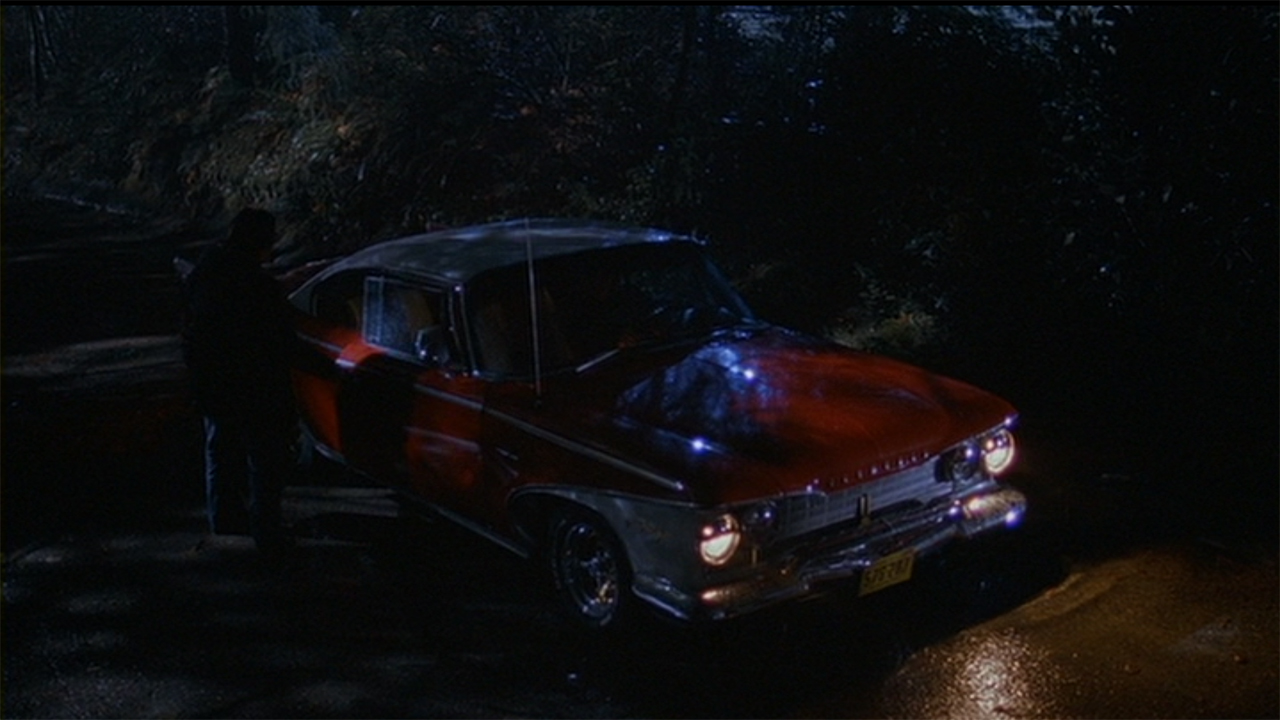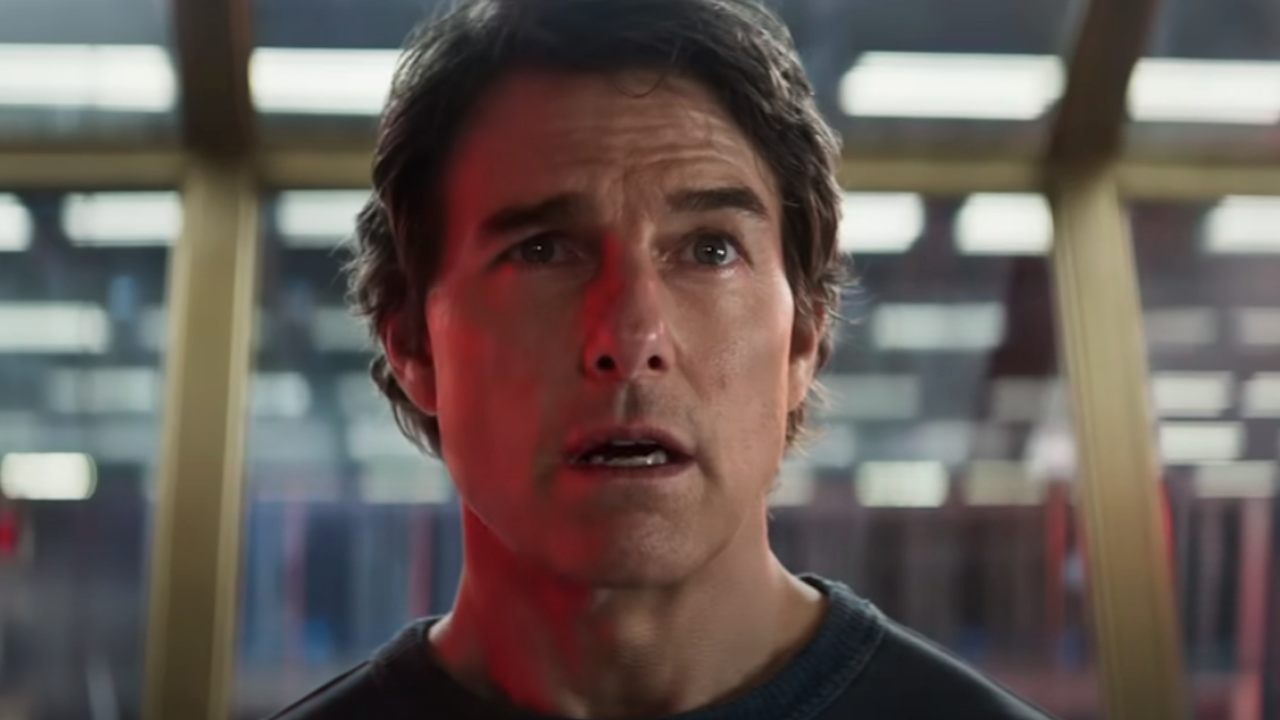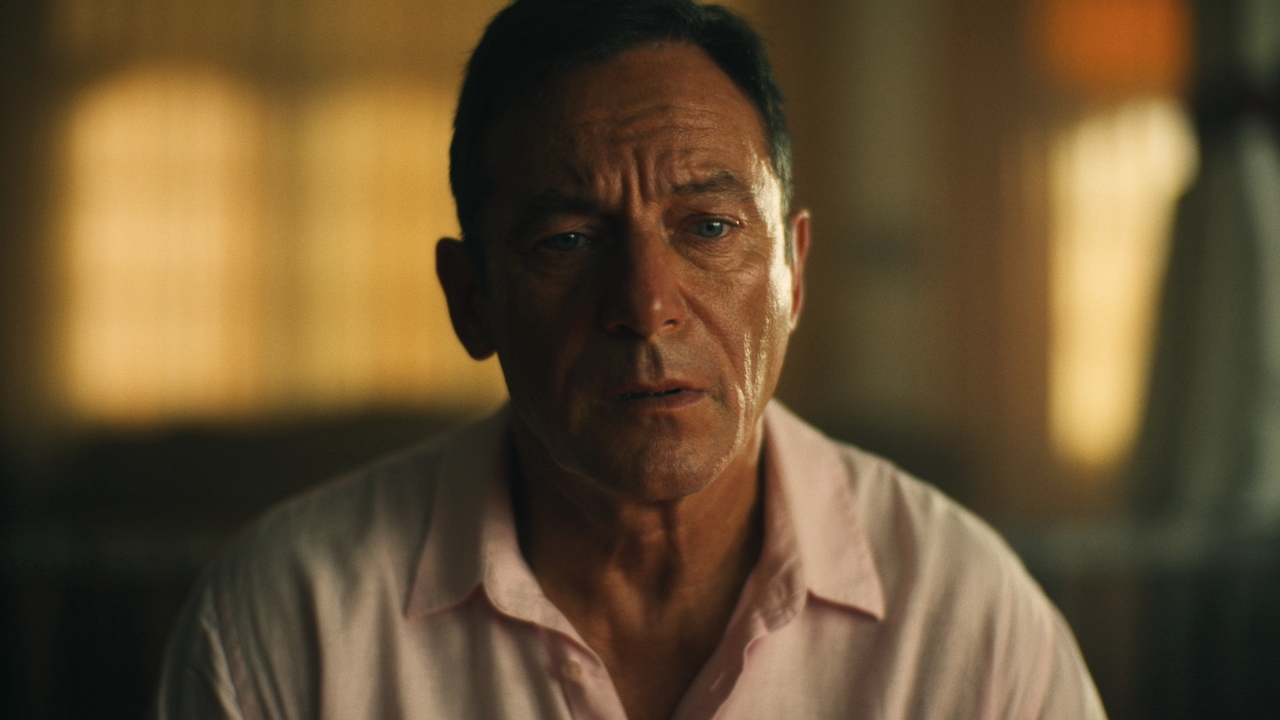Adapting Stephen King's Riding The Bullet: Is The 2004 Movie An Unseen Gem Or Deserving Flop?
Starring David Arquette and Barbara Hershey

As I’ve previously acknowledged in my features about The Stand and The Shining miniseries, and the TV movie Quicksilver Highway, Mick Garris was a key collaborator for Stephen King through the 1990s and early aughts. The two men first worked together bringing to life King’s first original screenplay, Sleepwalkers, and the author trusted Garris with adapting key projects that had been previously deemed unadaptable. When you consider the power that Stephen King wields in Hollywood, that earned trust was invaluable, and it led to some great success.
Riding The Bullet, however, is not what one would classify as a success stories.
Mick Garris purchased the rights to the short story of the same name in the wake of its phenomenal success on the e-book market (more on that in a moment), and though most of his adaptations of Stephen King’s work were developed for the small screen, he was intent on making Riding The Bullet as a theatrically released feature film. It had to be independently financed, but found backing and went into production in late 2003.
The movie premiered in the United States just in time for Halloween the next year, and it was an immediate bomb. The plan for Riding The Bullet was to start in limited release – 100 locations to be exact – and expand in subsequent release, but the film never got that far, ending its run after having made just $134,711 domestically.
From box office alone, Mick Garris’ Riding The Bullet could be called one of the least popular Stephen King movies, but that doesn’t provide the full picture of its failings, as I dig into in this week’s Adapting Stephen King.

What “Riding The Bullet” Is About
“Riding The Bullet” is a short story with a unique place in the Stephen King canon in that it was his first-time venture into the world of e-books, and also spectacularly successful from a monetary standpoint for the author. It can now be found in multimedia editions of the collection Everything’s Eventual, published in 2002, but it was initially released as a digital exclusive, and it was a phenomenon in the literary world – servers crashing as hundreds of thousands of “copies” were sold in the hours after they were first made available.
Stephen King recounts the origins of “Riding The Bullet” in the introduction for Everything’s Eventual, an essay titled “Practicing the (Almost) Lost Art.” He notes that it was one of the first things that he wrote following the roadside accident that nearly took his life in 1999 (which I wrote about in my column spotlighting Lawrence Kasdan’s Dreamcatcher) and he describes it as being a key distraction from the spectacular agony that he was experiencing during his recovery:
CINEMABLEND NEWSLETTER
Your Daily Blend of Entertainment News
Writing took me away from the worst of that pain; it was (and continues to be) the best pain-killer in my limited arsenal. The story I wanted to tell was simplicity itself; little more than a campfire ghost-story, really. It was The Hitchhiker Who Got Picked Up By A Dead Man.
It was only after Stephen King wrote it that the idea of it being published as an e-book was discussed, and it ended up being a massive hit that saw the author featured on the front page of both Time magazine and The Wall Street Journal. As he notes in the essay, however, he was ultimately put off by all of the attention that was put on the business of the short story’s release rather than the content. He thinks that’s a shame, because he thinks it is an entertaining and serviceable piece of writing:
It's a pretty good story, if I do say so myself. Simple but fun. Gets the job done.
Echoing Stephen King’s mournful short story “The Woman In The Room” from Night Shift, “Riding The Bullet” begins as college student Alan Parker receives word that his mother has had a stroke and has been taken to the hospital. Wanting to get to her bedside as quickly as possible and not having a car, he is forced to hitchhike the 120 mile distance from the University of Maine in Orono to his home town of Lewiston.
After covering a fraction of the journey beside an elderly man with some unceasing jock itch, the protagonist is picked up by a man named George Staub… and it makes him wish that he continued on with the crotch-scratching senior citizen. This is because George Staub is actually a dead man, Alan having seen the gravesite himself, and the philosophy student is given a terrible, pressured choice at high speed: either he can live, or his mother can.
Alan chooses to save himself, and after being thrown out of George’s car he dreads what he will witness at the hospital… but when he sees her, he discovers that she is fine. In the years that follow, she continues to live, but persistent in Alan’s mind is the memory of his hellish ride and the choice he made – knowing that she will eventually be taken from him.

How Mick Garris’ Riding The Bullet Differs From The Short Story
Watching Mick Garris’ Riding The Bullet knowing Stephen King’s short story, you’ll find that, plot-wise, the entirety of the source material is represented. Alan Parker (Jonathan Jackson) gets the call from his old neighbor (Danielle Dunn-Morris) that his mother (Barbara Hershey) has had a stroke; he rides with both the itchy groin farmer (Cliff Robertson) and George Staub (David Arquette); and after making it to the hospital he is shocked to discover that his mom is still alive – and only years later sees her pass on.
The big issue, of course, is that depicting those events alone doesn’t get a movie to feature-length, so Mick Garris had to get creative in the screenwriting process and add a whole lot of fluff –none of which does anything to maintain a consistent tone or add to the themes of the story in any meaningful way.
The setting changed to take place in October 1969, Alan is depicted as a goth-lite art student who is obsessed with death, and he begins the movie by accidentally almost taking his own life after his girlfriend (Erika Christensen) breaks up with him on his birthday. As a distraction, he plans on making a trip with a pair of friends (Chris Gauthier, Robin Nielsen) to go see John Lennon and the Plastic Ono Band, but those plans are interrupted when he gets the call about the medical emergency.
It’s not explained why Alan hitchhikes to Lewiston when seemingly his friends could drive him, but he puts his thumb out on the side of the road just like his on-the-page counterpart, and he encounters some extra encounters/conflicts that add more details to his long journey. This includes taking a ride with an odd, fake hippie (Nicky Katt), being chased by hooligans into a dump, and witnessing multiple, horrible animal deaths.
Mick Garris’ Riding The Bullet also makes several changes to Alan’s fateful ride with George Staub. For starters, the dead man drives a cherry red 1958 Plymouth Fury – the same kind of car that is featured in Christine – but more importantly, the entire sequence is expanded. In Stephen King’s story, for example, we only hear about Alan’s childhood memory going to the amusement park Thrill Village and being too afraid to ride the roller coaster known as The Bullet, but in the film, the location is used for more than just a flashback.
Taking a very different route, the adaptation features an entire chase sequence in the theme park (which is located in New Hampshire in the source material, not Maine). Alan manages to escape George’s car, and while the ghost stalks him through Thrill Village, he tries to hide on The Bullet – though he ends up riding the roller coaster when it magically turns on.

Is It Worthy Of The King?
Celebrating Thanksgiving about five years ago, I was speaking with my uncle, and we started talking about my cat, Bobo. At the time, my tiny pet was about 17 years old, and my uncle was shocked when I told him this. “So at this point she may just one day suddenly die,” he told me.
I laughed it off, but I’d be lying if I didn’t say that I wasn’t haunted by the comment. Bobo was in full health and made a regular habit of sprinting full speed around my apartment, but every time I went on vacation, or to a convention, or a set visit, I would have at the back of my mind that my cat would “suddenly die” and that I wouldn’t be able to say goodbye.
This past week, I was at home and around when Bobo’s health took a turn for the worse, and I brought her to the vet to be euthanized (which is the reason why this column is being published off-schedule). All the while, I had Stephen King’s “Riding The Bullet” in the back of my mind – thinking about how Alan Parker’s agonizing wait to learn about the fate of his mother mirrored my relationship with my furry companion. The King short story has shaggy dog elements (it’s tough to see where it’s going after Alan gets thrown out of George’s car), but it ultimately hits on a true fear, which is one of the author’s most spectacular talents in his fiction.
Mick Garris’ film adaptation of Riding The Bullet is not a fitting interpretation of the source material. Almost all of Stephen King’s narrative is present in the movie, and Garris’ script even goes as far as to crib dialogue straight from the text, but it’s buried in heaps of crap that is all clearly filler to get the material to feature length. Adding insult to injury, all of the nonsense not only dilutes the whole point of the story, but creates a tonal mess that prevents one from understanding how it’s all meant to be received.
The extra encounters that are added to Alan’s journey in the movie often come across as comical as much as horrific, and yet it also goes to some gross and terrible places – such as the vicious dog being obliterated by a tractor trailer. It goes to some goofy places, but then it tries to also sell Stephen King’s hyper-serious conclusion from the short story, and it doesn’t come anywhere closer to earning it.
Mick Garris is responsible for some of the greatest achievements in the history of Stephen King in film and television, as both The Stand and The Shining miniseries that he directed are spectacularly faithful works that in their own ways succeeded in doing what had previously been deemed impossible. Of all of Garris’ contributions to the grander legacy, however, Riding The Bullet is unquestionably the nadir. On top of its inability to translate the material, time has done zero favors to the grim aesthetics, and it ranks among the worst King adaptations in existence.

How To Watch Mick Garris’ Riding The Bullet
If you’re a completest who feels compelled to watch every Stephen King adaptation no matter how awful, I suppose the “good” news is that Riding The Bullet is an easy movie to find online – though in the physical media realm it is currently only available on DVD domestically. If you don’t mind your cinematic experience being interrupted by commercials, you can watch the movie instantly on Vudu, The Roku Channel, Tubi and Pluto TV. You can also purchase and rent the film digitally from major retailers including Amazon Prime, Apple TV, and Google Play.
Coming up, this column will be starting a special run of features that will last until the end of May, as the next project under the microscope is Nightmares & Dreamscapes – the anthology series that aired on TNT in 2006. The forthcoming eight Adapting Stephen King features will examine each of the episodes, starting with the premiere based on the Night Shift short story “Battleground.” Look for the piece in the CinemaBlend TV section on Wednesday, and in the meantime click through the banners below to discover all of the previous installments in this series.







Eric Eisenberg is the Assistant Managing Editor at CinemaBlend. After graduating Boston University and earning a bachelor’s degree in journalism, he took a part-time job as a staff writer for CinemaBlend, and after six months was offered the opportunity to move to Los Angeles and take on a newly created West Coast Editor position. Over a decade later, he's continuing to advance his interests and expertise. In addition to conducting filmmaker interviews and contributing to the news and feature content of the site, Eric also oversees the Movie Reviews section, writes the the weekend box office report (published Sundays), and is the site's resident Stephen King expert. He has two King-related columns.









